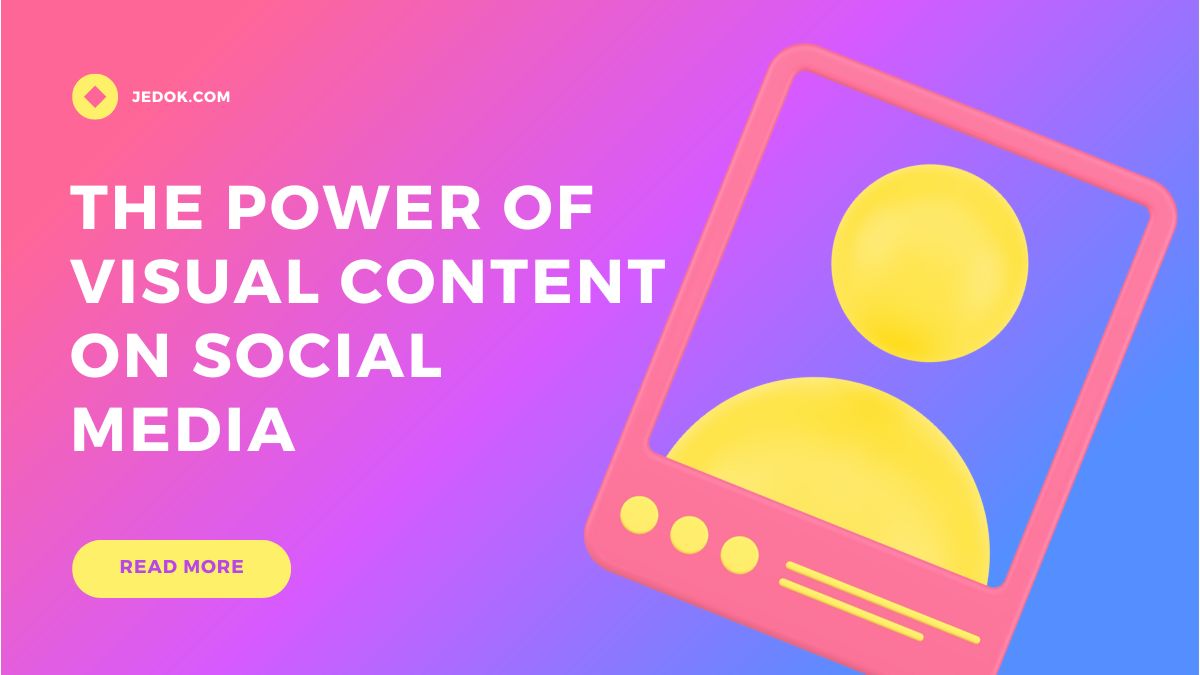
Visual content has become a crucial component of social media marketing. The use of images, videos, and other visual elements can significantly improve engagement and reach on social media platforms. In this blog post, we’ll discuss the power of visual content on social media and how businesses can use it to their advantage.
1. Visual content is more engaging:
In the world of social media, visual content has become a dominant force in capturing users’ attention. Studies have shown that visuals are more engaging than text alone. A study by Hubspot found that visual content is 40x more likely to be shared on social media than other types of content. This makes sense given that the human brain processes images 60,000 times faster than it processes text.
Visual content on social media can come in many forms such as photos, videos, and infographics. One reason why visual content is so effective is that it helps to convey information quickly and effectively. For example, a picture of a product or service can give potential customers an idea of what they will be getting before they even read any text about it. Additionally, visuals provide a way for businesses to showcase their brand personality and values through creative imagery.
2. Visual content is memorable:
Visual content has become a significant aspect of social media marketing and for a good reason. People remember visual content better than text. This is because the human brain processes visual information faster and more efficiently compared to textual information. The brain can store visual content, such as images or videos, in its memory for longer periods, making it easier to retrieve and remember.
The use of visual content on social media platforms has increased significantly in recent years. Social media users prefer visuals over text because they are more engaging and entertaining. Visuals also can elicit emotions that are difficult to achieve with text alone. They can evoke laughter, nostalgia, joy, or even sadness depending on the message being conveyed. With so much noise on social media platforms, brands that use visually appealing content can stand out from their competition by being memorable.
3. Visual content is shareable:
Visual content has become the most popular and effective way to engage with audiences on social media platforms. Images and videos not only help to tell a story but also evoke emotions, making it easy for users to connect with brands on a personal level. Visual content is becoming increasingly important in today’s digital age, where people are more visually stimulated than ever before.
In fact, according to recent studies, visual content is shared much more frequently than text-based content on social media platforms. This is because visual elements catch the attention of users more quickly than text-based posts do. Users tend to scroll through their feeds quickly, pausing only when something catches their eye or sparks their interest. And as they pause, they are more likely to share that piece of visual content with others who may find it interesting too.
4. Visual content drives conversions:
Visual content has become an integral part of digital marketing in recent years, and for good reason. Images and videos are much more engaging than text alone. Studies have shown that visual content can drive conversions by showcasing products or services in action. When consumers see a product being used or demonstrated, they’re more likely to make a purchase.
One area where visual content on social media can be particularly effective is video marketing. Short videos that showcase your products or services can be incredibly powerful. Not only do they allow you to demonstrate how your offerings work in real life, but they also give consumers a sense of what it would be like to use them themselves. This kind of immersive experience can go a long way toward building trust and credibility with potential customers.
Images on social media platforms can also be very impactful when used correctly.
5. Visual content improves brand recognition:
Visual content is an essential aspect of brand recognition on social media. Consistent visual elements such as colors, fonts, and imagery can make a significant impact on how people perceive your brand online. In today’s digital age, where people are bombarded with information from various sources, having a strong visual identity can help you stand out from the crowd.
Using visual content on social media platforms like Facebook, Instagram, Twitter, and LinkedIn can help you create a cohesive look and feel for your brand. By using consistent images or graphics that reflect your brand’s values and personality, you can increase your chances of being recognized by your target audience. Additionally, using branded visuals in your posts or ads can make it easier for users to remember and associate them with your business.
Visuals also play a crucial role in creating engagement on social media platforms.
6. Visual content diversifies your content strategy:
Visual content is becoming an essential part of social media strategies. Incorporating visual elements into your content strategy can help you diversify the types of content you publish and keep your audience engaged. Visuals are a great way to break up text-heavy posts, add personality to your brand, and capture the attention of those scrolling through their feeds.
Visuals come in different forms; images, videos, graphics or infographics, animated GIFs, and other creative formats can all be used to enhance your social media presence. The use of visual content on social media has been proven to increase engagement rates as it’s more memorable than plain text alone. It’s also important that visuals are aligned with your brand and messaging for consistency across all channels. Using visual content consistently across all platforms helps create a cohesive look for your brand while providing value to your followers.
To make the most of the power of visual content on social media, businesses should ensure that their visuals are high-quality, relevant to their target audience, and aligned with their brand identity. Additionally, businesses should experiment with different types of visual content, such as static images, animated GIFs, and video content, to see what resonates best with their audience. By incorporating visual content into your social media strategy, you can improve engagement, reach, and ultimately drive business results.




